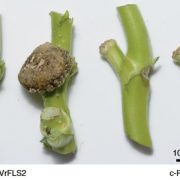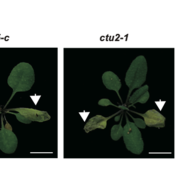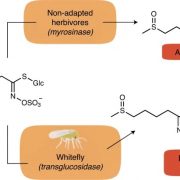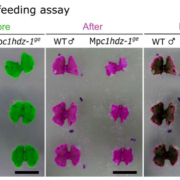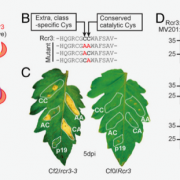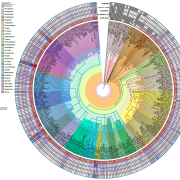Chemical defense: Exploring two-component plant defense mechanisms in Panax species
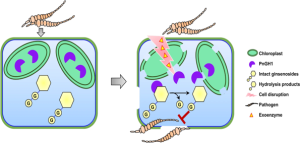 In the interesting world of plant defenses, plants have secret weapons called defense metabolites that stay quiet until a pathogen comes knocking. Plants have evolved two-component chemical defence systems to protect against pathogens while striking a balance between growth promotion and defence mechanisms. Two-component chemical defense systems are coined as such due to the separation of the defensive enzyme from its substrate. Upon activation, these components mix to form the protective molecule; cyanogenic glycosides are a well-known example of this concept. Here, Ma et al. revealed a two-component chemical defense system in Panax notoginseng against the necrotrophic fungus Mycocentrospora acerina. Ginsenosides, widespread secondary metabolites in Panax sp., are synthesized using substantial resources by P. notoginseng, hinting at vital plant functions or benefits. This plant defense mechanism is comprised of PnGH1, a chloroplast-localized β-glucosidase, and its partnering substrates, the 20(S)-protopanaxadiol (PPD) type ginsenosides. Upon cell disruption, induced exoenzymes from pathogenic fungi facilitate the release and blending of chloroplast-localized PnGH1 with its substrates, resulting in heightened potency of the hydrolysis products in inhibiting pathogen growth, both in vitro and in vivo, compared to non-hydrolyzed substrates. This defense mechanism extends beyond P. notoginseng, encompassing Panax quinquefolium and Panax ginseng. Understanding the mechanisms involved in plant defense allows researchers to design pesticides that can specifically target and disrupt the pathways utilized by pathogens. (Summary by Tuyelee Das; @das_tuyelee) Nature Comms. 10.1038/s41467-024-44854-7
In the interesting world of plant defenses, plants have secret weapons called defense metabolites that stay quiet until a pathogen comes knocking. Plants have evolved two-component chemical defence systems to protect against pathogens while striking a balance between growth promotion and defence mechanisms. Two-component chemical defense systems are coined as such due to the separation of the defensive enzyme from its substrate. Upon activation, these components mix to form the protective molecule; cyanogenic glycosides are a well-known example of this concept. Here, Ma et al. revealed a two-component chemical defense system in Panax notoginseng against the necrotrophic fungus Mycocentrospora acerina. Ginsenosides, widespread secondary metabolites in Panax sp., are synthesized using substantial resources by P. notoginseng, hinting at vital plant functions or benefits. This plant defense mechanism is comprised of PnGH1, a chloroplast-localized β-glucosidase, and its partnering substrates, the 20(S)-protopanaxadiol (PPD) type ginsenosides. Upon cell disruption, induced exoenzymes from pathogenic fungi facilitate the release and blending of chloroplast-localized PnGH1 with its substrates, resulting in heightened potency of the hydrolysis products in inhibiting pathogen growth, both in vitro and in vivo, compared to non-hydrolyzed substrates. This defense mechanism extends beyond P. notoginseng, encompassing Panax quinquefolium and Panax ginseng. Understanding the mechanisms involved in plant defense allows researchers to design pesticides that can specifically target and disrupt the pathways utilized by pathogens. (Summary by Tuyelee Das; @das_tuyelee) Nature Comms. 10.1038/s41467-024-44854-7


